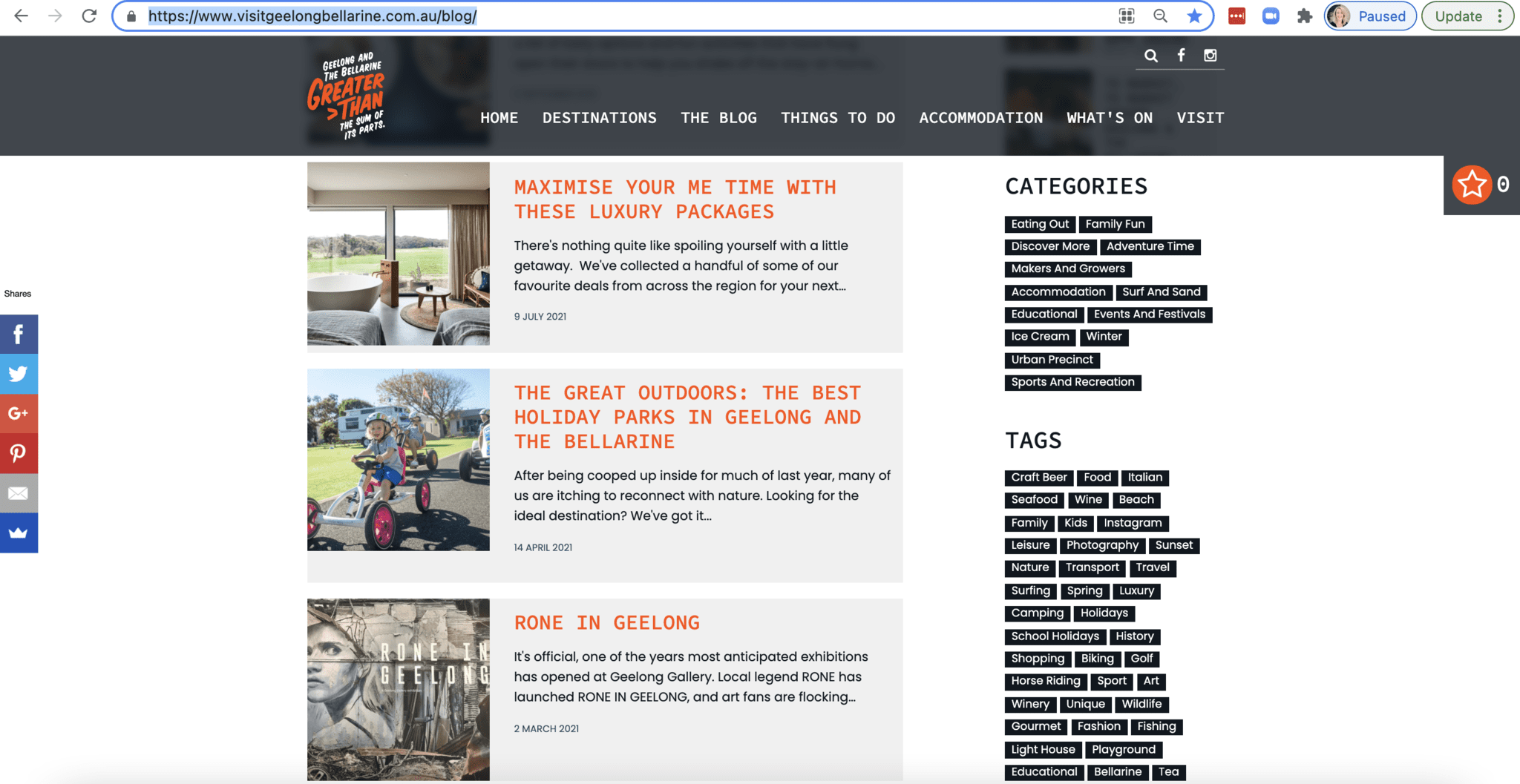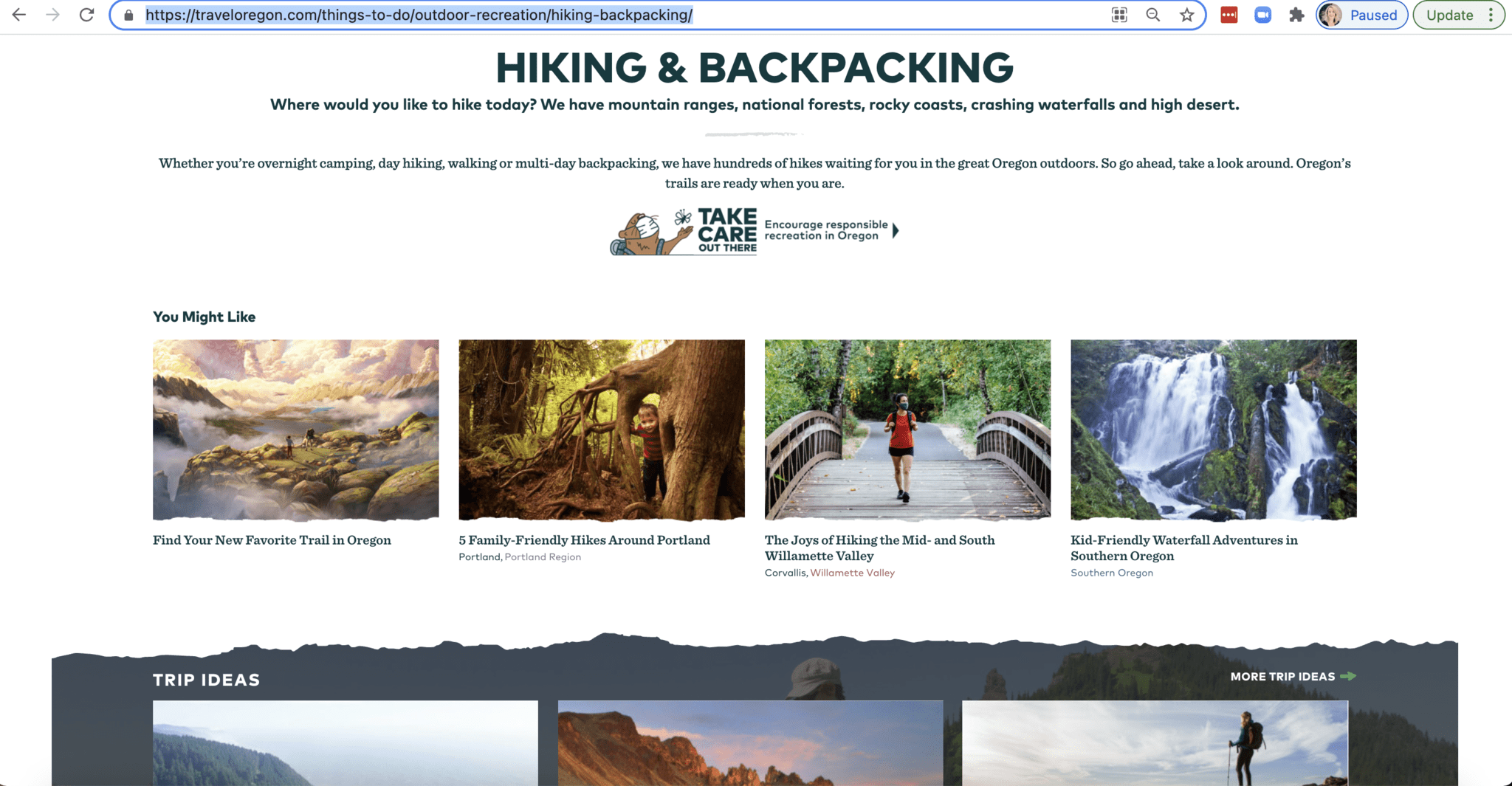Doubling-Down on your Visitor’s Passions: 4 Steps to Attract + Convert Interest-Based Travellers
Published on December 21, 2022
People rarely travel for travel sake these days.
The internet is a supercharged inspiration and networking machine which has enabled travellers to connect and craft out the perfect idealised holiday based on their passions - think birdwatching, cave diving, mountain biking, trekking just to name a few.
Whilst these passion points are niche, but are no means insignificant.
Key Benefits of Passion-Interest Marketing
- High Yielding Visitors. People who travel for their passions are more likely to have an extended length of stay, and because of this are logically higher-yielding.
- Conscious Visitors. People who travel for passions also have a greater affinity for the place, people, and the impact of their stay due to their connection to the destination. The perfect visitor, really.
- Search Engine Gold. Creating and optimising content for a specific niche is bound to get great leverage and drive referrals from Google Search Engine Results given the very specific nature of the questions your Visitor Personas will be typing into search engines to find out more about their passions.
This is a game changer opportunity for DMOs, as it totally simplifies the process of attracting and converting more of the people who will love their destination for what it is, and become those highly-trusted, long-term advocates.
So, I’ve pulled together the below steps to help you effectively plan out an evidence based strategy to start attracting and converting more travellers who could visit your destination to fulfil their passions.
Step 1: Undertake an Product/Experience Audit
Having an exhaustive list of the experiences within your destination is a key piece of intel a marketer needs to sell a destination.
This not only includes premium and owned experiences, but those experiences that are freely accessible to the public (and often managed by local governments or local community committees), as these experiences are often part of the overall experience proposition for a destination.
Classifying your experiences under experience ‘themes’ will help to flesh out the experiences that could potentially target interest-based travellers, and give you insight as to where the gaps for development and marketing exist for each interest segment.
Step 2: Profile the Visitor Persona and audit their touchpoints
Visitor Persona Profiling has to be the #1 strategic imperative for all destinations.
However, to attract people who are travelling to pursue their passions will require a nuanced marketing effort, as they are going to be slightly different in their motivations and challenges than your overarching Visitor Personas for your destination.
People travelling for their passions will use a wide range of sources to plan out their interest-based holidays – think online and offline. These sources will need to be mapped against each persona developed for the interest-segment, along with the optimisation of those touchpoints.
Step 3: Powerful Storytelling on Visitor Touchpoints
As you know, storytelling is the cornerstone of any destination marketing strategy.
Storytelling to attract those looking to fulfil their interests in your destination comes down to honing in on stories that are relevant for them in being able to fulfil their passion in your region.
And, if you can become the authority in a certain niche interest, you are more likely to build trust and consideration from the segment.
Interest-based travellers likely have a few destinations on their hit-list at any given time. So you need to give them the reasons why they should choose your destination first.
Planning your Storytelling
A few considerations for you as you plan out your storytelling include:
- Really getting to know the stories for each individual experience (eg. attracting mountain bikers, you could hunt down the stories that are relevant for each course; for food enthusiasts, sharing personal stories of the makers/creators) and make the linkages between the persona’s travel motivations and the experiences you’re promoting
- Share the benefits of the experiences in your destination. Don’t just tell them what experiences you have, but how those experiences as a collective will help them to achieve their overarching motivation for travel. I can’t stress this enough. The Snowy Valley's Destination Website has some awesome copy on their homepage that really speaks to the benefits of their destination - love it!
- Map out the pragmatic (not so sexy!) travel related questions they have across their travel purchase journey – eg. what are the best times to travel to your destination to partake in the interest experience? What should they wear at certain times of year etc.
- Leverage stories that are created by those who have been before. Scan social media for content across platforms to find stories that you can re-share and re-frame.
Implementing your Storytelling
Once you have your stories, created, curated or otherwise, understanding how these translate into comms activity is the next step.
Understanding where your interest-based travellers hang out is part of step 2, in your visitor persona map.
Some key ideas to consider with regard to implementation include:
- Write articles for your destination blog that answer all of your Visitor Persona's questions about travelling to your destination for their passion interest. It's essential these articles are single-minded (answer one question only) and are optimised for Search Engine Visibility.
- Set up your blog on your website so that it is categorised for niche interests, along with your key experience themes, just like the Visit Geelong & The Bellarine have done on their blog (see the categories and the tags in the right hand column).

- Set up landing page on your website for all information relating to a specific interest. On this landing page, give your website users everything answer to any question they may have (and more) about undertaking their passion in your destination (blog articles, event information etc), just like Travel Oregon has done below.

- Identify and support potential visitors in Facebook Groups that are relevant to the niche, providing helpful visitor servicing support
- Work with digital influencers and media brands of that niche interest. Influencers are a great way to get increased exposure to a particular niche audience. Just remember to remain strategic with your investment. Eg. If you wanted to focus on Golfing as a passion niche, then you could look at connecting with Golf Gods, who have a huge influence on a certain golfing market.
Step 4: Refine + Develop new Niche Experiences in your Destination
Ensuring you have critical mass of relevant experiences to lure interest-based travellers to your destination will be another critical piece in the puzzle to advocate for.
Key consideration points to ensure the supply matches your demand include:
- Ensure your local government(s) are engaged in the niche marketing opportunity, and highlight the touchpoints in the travellers journey that are relevant to the community assets that they manage. Also, work with your LGAs to develop positive planning policies around development to support new development opportunities to support the niche interest segment.
- Identify and assist relevant operators in your region to work collaboratively to develop and market experiences that are targeted toward the niche. Also, support your operators to ensure the touchpoints for their brand are optimised for the interest-based travellers path the purchase.
- Work with relevant state based authorities to start conversations about the development of sites that could open new opportunities to drive increased demand from the interest segments.
- Pitch to host events for the niche interest. A great example of this in action is on Cocos Keeling Island. CKI is one of best spots in world to Kite Surf, and they teamed up with Red Bull events to host Kite Surfing event and tapped into their global sports tour and media channels.
- Work with your local enthusiasts – Touch base with your local club to see if you can get their input on storytelling creation, experience development ideas/gaps in that particular niche interest, also use of their photos/videos. Consider social license – they may or may not be that keen to share the love of their favourite spots for visitors!
What destinations are doubling-down on niche interests?
Tourism Tasmania
Through an intimate understanding of their current customers, and through their own research, Tourism Tasmania have identified that:
"Customer needs are changing as visitors seek work-life balance to pursue their interests and create greater enjoyment and meaning in their lives. With greater wealth, mobility and access to destinations, there is an increase in the number of people travelling to pursue their interests as a primary driver of visiting a destination."
Following those insights, they have carved out an understanding of the interest-based segments that people will travel to Tasmania for, and what their unique selling proposition is for those segments - and titled them their 'Unordinary Adventures'.
